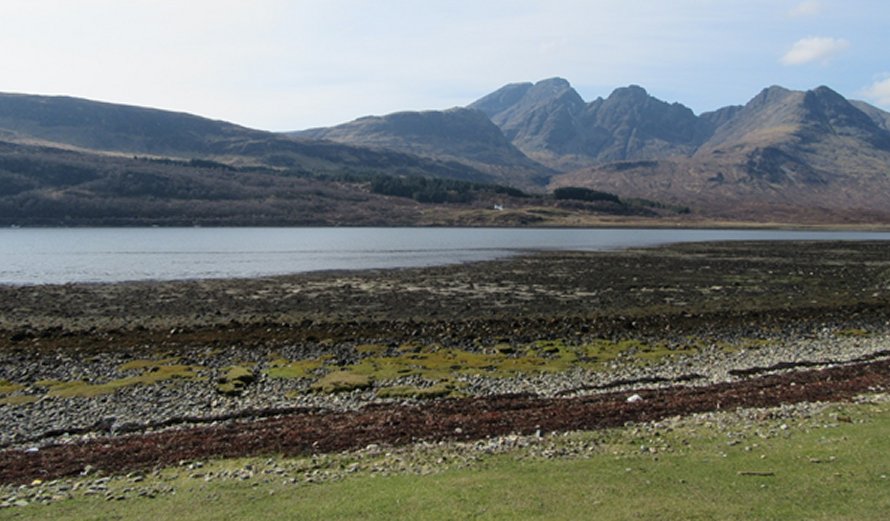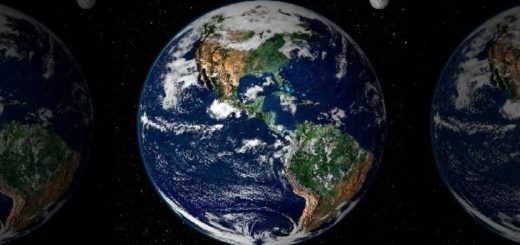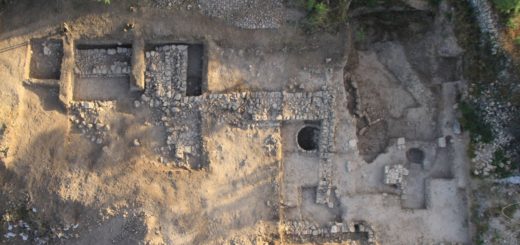A 60-Million-Year-Old Meteorite Impact And Unique Minerals Never Recorded On Earth Discovered On Isle of Skye
A previously unknown, 60 million-year-old meteorite impact has been accidentally discovered by geologists exploring volcanic rocks on Isle of Skye, on the northwest coast of Scotland.
“We thought it was an ignimbrite (a volcanic flow deposit),” lead author of the paper, Simon Drake, an associate lecturer in geology at Birkbeck University of London, said in a press release.

Place of discovery: Site 1 is above the treeline in the mid-ground far side of Loch Slapin. Credit: Simon Drake.
A meter-thick layer at the base of a 60-million-year-old lava flow – something extraordinary and definitely out-of-this-world – contained rare minerals straight from outer space.
These mineral forms have never been reported on Earth.
They have, however, been collected by NASA’s Stardust Comet Sample Return Mission as space dust in the wake of the Wild 2 comet. The team also identified reidite, an extremely high pressure form of zircon which is only ever associated in nature with impacts, along with native iron and other exotic minerals.
Also next site, only seven kilometers away – revealed a two-meter-thick ejecta layer – with the same strange minerals.
The impact took place approximately 60 million and 61.4 million years ago based on the age of the impact site and the overlying lava flow.
Thin section view of meteoritic ejecta deposit site 1. Note fractured quartz and pervasive fabric. Field of view 4 mm
A 60-Million-Year-Old Meteorite Impact And Unique Minerals Never Recorded On Earth Discovered On Isle of Skye
The discovery raises many important questions:
Is the same ejecta layer found elsewhere in the BPIP? Where exactly did the meteorite hit? Could the impact have triggered the outpouring of lava that began at the same time, or be related to volcanism in the larger North Atlantic Igneous Province?
Many unique minerals have already been found on the Isle of Skye. The place, however, is the boggy terrain, which is difficult to investigate for researchers interested in sampling the layer.
“We were sinking in up to our thighs. I distinctly recall saying to (co-author) Andy Beard, ‘this had better be worth it.’” Now, says Drake, “It was worth it.”



 Creators of mankind
Creators of mankind Description of “Tall white aliens”
Description of “Tall white aliens” Where they came from?
Where they came from? About hostile civilizations
About hostile civilizations The war for the Earth
The war for the Earth “Tall white aliens” about eternal life
“Tall white aliens” about eternal life Video: “Nordic aliens”
Video: “Nordic aliens” Aliens
Aliens Alien encounters
Alien encounters The aliens base
The aliens base UFO
UFO Technology UFO
Technology UFO Underground civilization
Underground civilization Ancient alien artifacts
Ancient alien artifacts Military and UFO
Military and UFO Mysteries and hypotheses
Mysteries and hypotheses Scientific facts
Scientific facts


















